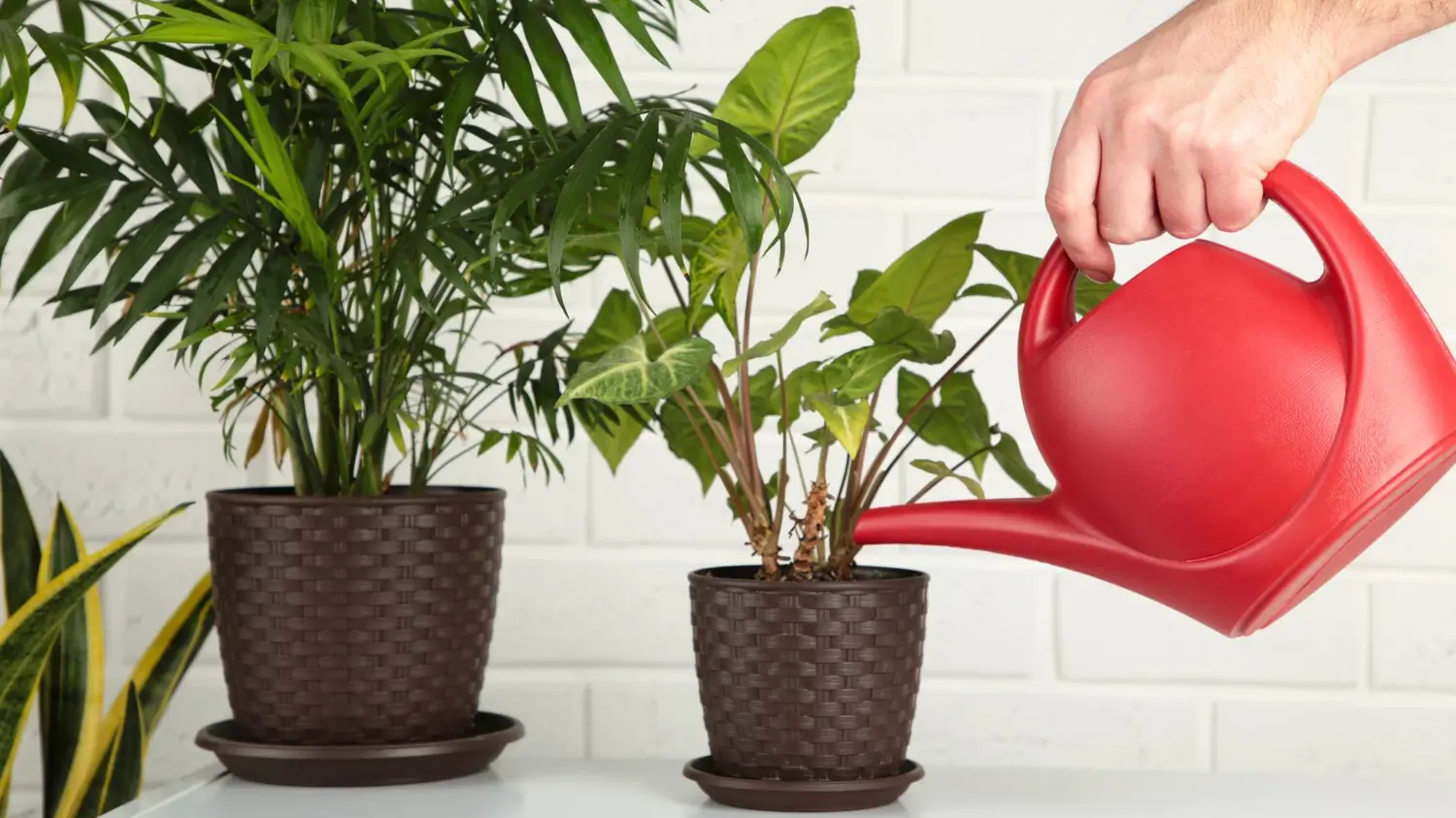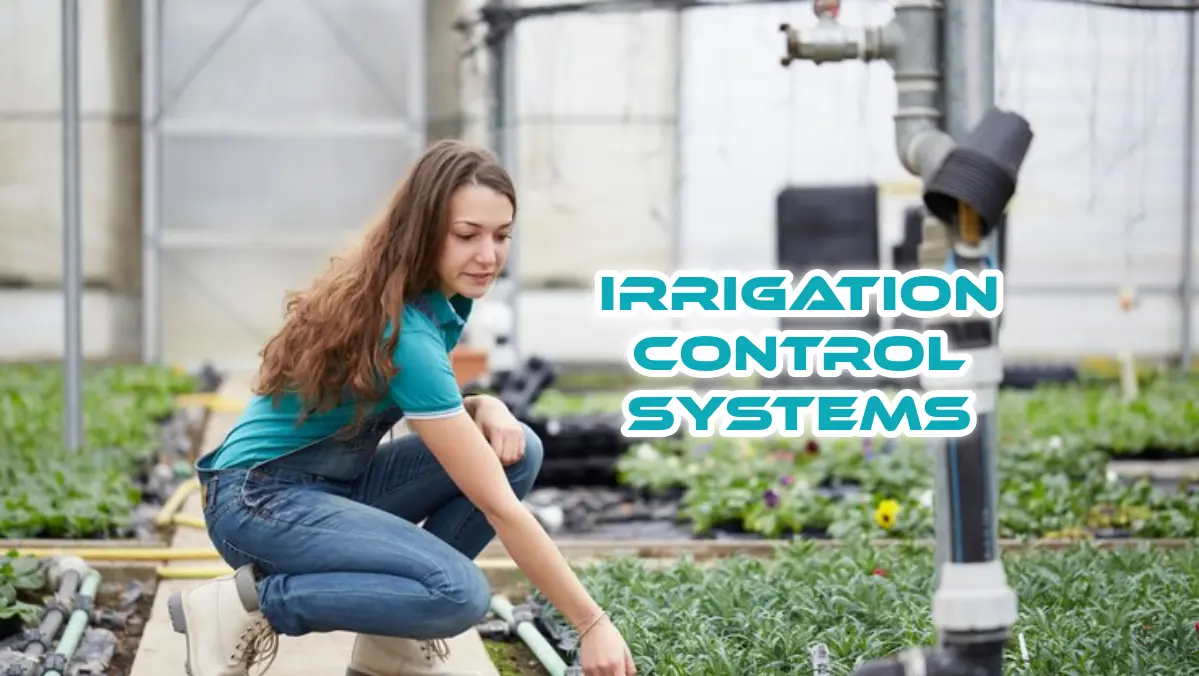
August 24, 2025

Water gives life to everything, whether humans, animals, or plants. Plants, like humans, need water to survive. It plays an essential role in photosynthesis and transports nutrients and trace elements from the soil and growing media to plant tissue, keeping them healthy and green.
Watering systems are essential for indoor plants, keeping them hydrated and healthy. Gardeners often make the biggest mistake of overwatering or underwatering plants, which leads to stunted growth. In such cases, automated watering systems work like magic to supply water to plants automatically at an optimal rate.
Growcycle provides various watering systems and kits to keep plants hydrated. So, if a gardener is stuck in a hectic daily routine, he can use these automated watering systems to keep his plants hydrated. The article below will explore all the vital details about watering systems, including the best ones.
Watering systems are artificial systems that deliver water to the soil using a network of tubes, pumps, and sprayers. Gardeners can use it when natural water sources and rain are insufficient to meet plant water demands and in places with unpredictable rainfall, dry spells, or drought forecasts. There are various types of watering systems. In some cases, water is distributed equally throughout the field. Others use drippers to apply water precisely to the desired root zone.
Several types of indoor watering systems help keep plants healthy and well-watered. Here are the main types:
Drip irrigation is a micro-irrigation system that sends water directly into the soil via pipes and emitters. It is more efficient than other irrigation technologies when correctly designed, installed, operated, and maintained. Drip irrigation systems have various components that channel water from its source:
Moreover, it provides more targeted and efficient irrigation, lowering water losses due to evaporation or runoff. This leads to better water saving and overall plant health and growth. It is also best to supply nutrients to plants.
Self-watering pots and planters are essential for the container herb garden. These planters are available in various colors and sizes to accommodate nearly any design style. A decent self-watering pot should have a deep reservoir to hold water for at least several days and is easy to replenish as needed. Some self-watering pots are:
Plant watering spikes are among the most popular and visually appealing indoor watering systems. Various manufacturers offer this device in multiple styles, appearances, and prices. The main idea behind the plant watering spike is that it functions as a reservoir that uses capillary action to hydrate the plants.
The spike itself is composed of porous materials, such as unglazed earthenware. It sits below the surface in each container, nearly flush with the level soil. When the soil around the spike dries up, a plastic tube running from the spike to the neighboring reservoir mechanically pulls water into the soil, delivering it to the plant.
Plant watering globe stakes are a popular choice for indoor and outdoor pots. These beautiful glass globes with hollow spikes are an attractive and helpful method of watering herb pots. Gardeners can plant the spike in the ground after filling the soil with water.
Water seeps into the soil from the globe when the earth dries out. These self-watering globes are an elegant way to water the plants without leaving hoses and tubes trailing everywhere. Large pots may necessitate the use of several globes.
Soaker hoses are also an effective way to water the lawn. Gardeners can bury the hoses in soil, making them nearly unnoticeable. Soaker and weeper hoses are among the most cost-effective garden irrigation solutions.
They can add water directly into the soil, reducing the risk of evaporation and requiring less water. Water is also less likely to lie on the ground or leaves, enabling mold and mildew to accumulate near the plants.
Window boxes are an excellent way to cultivate herbs. They attach to the outside of the window, allowing for plenty of natural light while remaining easily accessible from the inside. This gives the plants the best of both worlds. With the help of its integrated water reservoir, the plants will take up water as needed.
The window box measures 36 inches wide by 11 inches deep by 10.8 inches high. This ideal illustration combines form, beauty, and functionality to turn windows into a personal window sill herb garden.
Automated watering systems offer several benefits for indoor plant care. Here are the key advantages:
Automated plant watering systems can save both time and effort. Here are some top kits gardeners can use to automate their watering systems.
The Autopot Easy2Go Holiday Watering Kit can help to keep plants healthy while a gardener is away. It is easy to use and ensures the plants get enough water. This kit has a special part called the AQUAvalve that controls the water flow. It gives the plants the right amount of water so they don’t get too much or too little.
To set up the Easy2GO, connect a water container to a tray next to the plants. The container watered the plants from the bottom to get water evenly, helping them grow strong roots. Moreover, it watered the plants for weeks. It works well for many plants, whether inside the house, herbs, or flowers.
With this kit, plants can stay healthy without much work. Gardeners can enjoy their vacations or busy days without worrying about their plants. The Easy2GO Vacation Watering Kit makes sure the plants stay happy and bright.
The PlantBest Self-Watering Greenhouse Kit is a helpful tool for growing plants easily. It uses special matting that soaks up water from a tank so plants get the right amount, preventing them from being too dry or too wet.
The greenhouse has a water tank that can feed water to the plants for up to a week. This means growers or homeowners don't have to water them often, which is great for busy people or anyone who forgets. It also keeps humidity steady, which helps seeds grow faster. This makes it suitable for both new and old gardeners. The design makes sure plants get care even when homeowners aren’t there so they can grow well.
The PlantBest Coconut Coir Self-Watering System Kit makes indoor gardening easy. It comes with 28 coir pots and a special tray that waters plants evenly, which is great for seeds and cuttings. It spreads water to all plants, so gardeners don’t give them too much or too little water. This helps the roots grow strong.
The kit has 28 eco-friendly coconut pots. These pots let air reach the roots and break down over time, making it easy to move the plants later. This kit is perfect for beginners and experienced gardeners who want an easy way to grow plants.
The PlantBest Self-Watering System Kit saves time and effort. It keeps the plants watered while the gardener enjoys his work or cares for other things. Thus, it’s a great choice for anyone who wants to grow healthy plants.
The Cinco Automatic Watering System helps gardeners to water their plants, especially Christmas trees, without bending down. It makes tree care easier. This system can hold 4 quarts of water, so gardeners don’t have to refill it as often. It also has a clear part to show how much water is left.
The kit includes a strong tube and a collapsible jug for easy use. It’s designed to help everyone, even those who find tree care hard. Made in the USA, this system comes with a warranty, showing it's a good product. This tool is perfect if gardeners want an easy way to keep their holiday trees fresh. This product is a simple solution for watering trees and helps them look great with less work.
Here are the top 5 factors a gardener must check before choosing an indoor watering system:
Soil type influences the watering system and how long it takes to water plants. Sandy soil drains quickly, so it needs frequent watering with larger amounts of water to keep the roots moist. Clay soil, on the other hand, holds water for longer but requires more frequent watering at lower rates to prevent water from running off. If too much water is applied too quickly, it can waste water and harm plants. Knowing the soil type can help growers to choose the right watering method.
Watering on hilly or sloped land can be tricky. Drip irrigation works best when the pipes follow the shape of the land to avoid water runoff. Gardeners may need to adjust how long the system runs to reduce water loss. Systems like travelers or center pivots are not suitable for steep slopes because they need flat ground. Proper planning is important for effective watering in these areas.
Sprinklers are less effective in areas with strong winds or low humidity because wind can blow the water away, and much of it evaporates. In such conditions, drip irrigation is a better choice. It delivers water directly to the plant roots, reducing evaporation and ensuring plants get the moisture they need, even in harsh weather.
Sprinkler and drip irrigation systems can be costly, so they are best used for valuable crops like vegetables, fruits, and orchard plants, which can bring higher profits. These systems may not be cost-effective for crops like wheat or soybeans that generate lower profits.
Drip irrigation systems require water filtration, while overhead systems like sprinklers usually do not. The water must be checked for diseases, and chlorine may need to be added depending on the crop and irrigation system. Soluble iron and other dissolved elements in the water can clog the system and affect plant growth. Regular water testing helps ensure the irrigation system works well and supports healthy plants.
A gardener must avoid some common mistakes while using automated watering systems.

The function of irrigation is of crucial significance in agriculture, where each drop of water is essential, and every harvest has the potential to provide nourishment and a means of existence.
LEARN MORE →Rainwater is the best source of water for indoor plants. Well water is the next best option, and tap water from the faucet is the third best option. These three types of water are ideal for houseplants since they include essential minerals and nutrients.
Drip irrigation is the most efficient watering system for irrigating various crops. It is also an excellent approach to irrigating clay soils since the water is given slowly, allowing the soil to absorb it and preventing runoff.
People can build a simple self-watering system with a small water bottle. To do this, they just need to cut the bottom of the bottle and poke a hole in the bottle cap using a skewer. Then, place the inverted bottle in a pot or planter to water the plants.
Automated watering systems offer a modern and easy way to care for plants. These systems can help plant owners, especially busy ones, to water their plants without stress. They provide accurate watering, save time, and are environmentally friendly. Automated systems meet the specific needs of indoor plants while giving users peace of mind. Common types include drip irrigation, self-watering pots, and advanced systems like the PlantBest Self-Watering Greenhouse.
Companies like Growcycle provide reliable irrigation control systems, making plant care more efficient. Using such systems allows homeowners to save time and energy while creating the garden they want.
Disclaimer: This material is for informational purposes only and should not be relied on for legal, medical, financial, or any other form of professional advice.